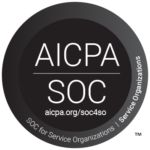Direct Mail Trends We’re Watching:
Postage, Delivery Performance, Paper and More
 PMG is monitoring several critical industry trends as we enter the fall mailing season:
PMG is monitoring several critical industry trends as we enter the fall mailing season:
Postage:
New postage rates go into effect August 29, 2021. Commingling rate increases are compounded by rising fuel costs, truck driver and transportation shortages and a persistent labor shortage. Yet increases for non-commingled mail are even higher.
PMG and its MailSmart Logistics team highly recommend an initial Postal Logistics review to uncover any cost savings in your mailing program. Increasing commingling volumes to achieve the best rate possible is one of the easiest ways to save on postage, especially now.
A package design review may also reveal opportunities to modify the weight and thickness of your “flat” mailings and move into a less expensive letter rate package that can commingle versus more costly drop shipping. Freight costs are increasing significantly for drop shipping.
Mailers can also save 2% on postage this fall by participating in the USPS Informed Delivery Promotion effective September 1 – November 30, 2021.
Mail Delivery Performance:
In a recent USPS Industry Alert, service delivery performance data for July 1st – August 12th showed steady improvement across First-Class, Marketing and Periodical mail categories from the 3rd quarter ending June 30:
- First-Class Mail: Delivered 88.8 % of First-Class Mail on time against the USPS service standard, an improvement of 1.3% from the third quarter.
- Marketing Mail: Delivered 92.6% of Marketing Mail on time against the USPS service standard, an improvement of 1.6% from the third quarter.
- Periodicals: Delivered 82.4% of Periodicals on time against the USPS service standard, an improvement of 3.1% from the third quarter.
Our supplier partners are reporting performance levels of client mail slightly below the USPS reported data, most likely due to the limited amount of mail included in the USPS measurement.
The USPS is trumpeting its service level improvements but is now officially slowing delivery of mail. On August 6, the Postal Service announced its plan to move ahead with lengthening the service standards for almost 40 percent of First Class Mail and 7 percent of Periodicals Mail beginning next month. Deteriorating service will most likely have a negative impact on mailer volumes and USPS revenue. Through pressure from Alliance of Nonprofit Mailers, The Nonprofit Alliance and other industry groups, we hope this misguided decision will be reversed.
Paper & Materials:
Paper shortages, delivery delays and price increases continue. Paper allocations remain very strict through at least October. On-the-floor inventory at our suppliers is depleted. Paper producers are eliminating some paper grades and transitioning to packaging grades in some instances, while other mills are closing permanently. Meanwhile increased demand, increased shipping costs and ongoing staffing shortages are driving up prices.
Environmental-spec papers like Forest Stewardship Council (FSC) and Sustainable Forest Initiative (SFI) stocks are limited. Clients that require these environmental certifications on their mail pieces limit alternative paper sourcing options. Some organizations are dropping their logo requirements temporarily to allow more flexibility in substitute stocks.
Suppliers that focus on coated stocks expect another paper cost increase of 5-7% this year, with at least two increases projected for 2022. One of our leading suppliers in offset paper stocks expects price increases of 8-9% by the end of 2022.
Suppliers are also seeing rising costs for other materials, including pigments and chemicals used in ink, polybag substrate, fuel and freight. Cost increases of at least 5% are expected in 2022 across these categories of materials.
Despite shortages and cost increases, demand for printing is high. Many of our suppliers are operating at capacity. Labor shortages and the threat of Covid/Delta Variant outbreaks could further impact schedules and lead times. Last minute drop-in projects often can’t be scheduled, so long-term planning, ample lead times and sticking to art and data schedules are critical.
Overseas Production:
Though ocean freight costs continue to rise, our suppliers’ relationships with ocean freight companies allow us access to containers when others cannot get them. These relationships contribute directly to our ability to meet our clients’ mail dates.
Flexibility in budgets is helpful when scheduling is the priority. Switching to a faster yet slightly more expensive production process, for example, jet printing envelopes instead of using flexo, can help meet your mailing deadlines.
At PMG, we’re constantly finding ways to keep your direct marketing programs on track despite all these challenges.
Your PMG Production Team will continue to advise you on how these trends may impact your project budgets and schedules this fall and into 2022.
Please contact us if you have any questions or concerns. As always, we’re here to help!



